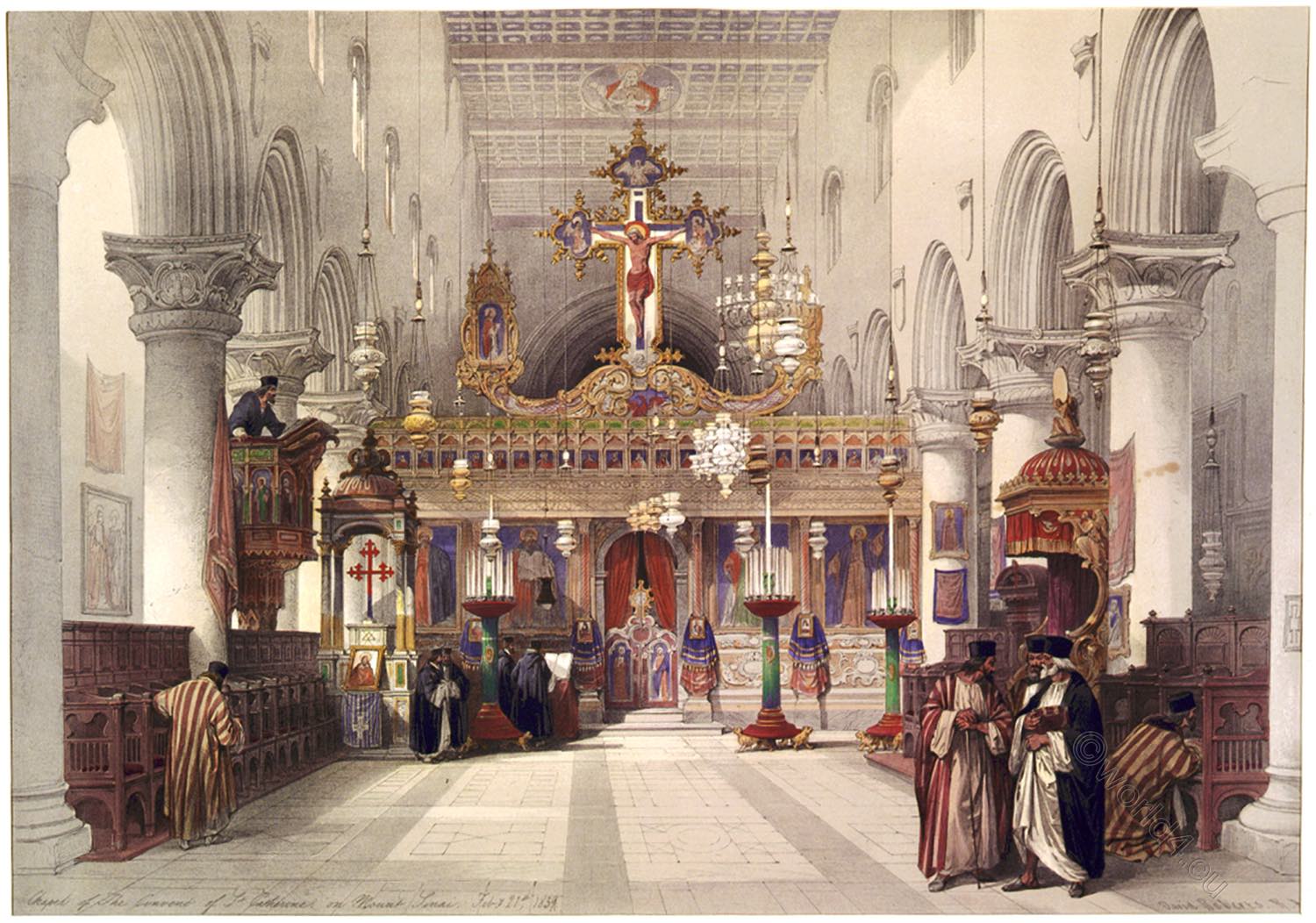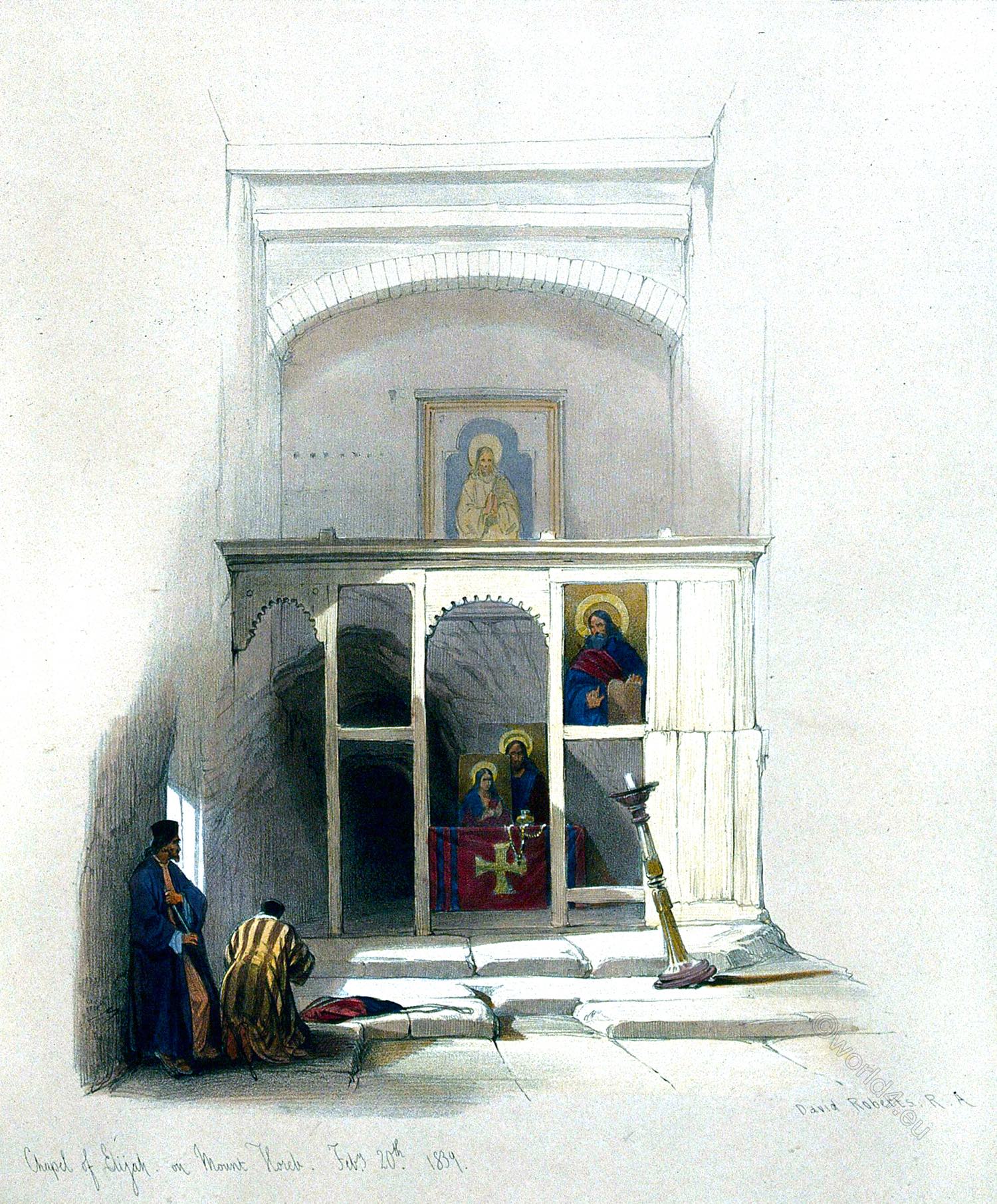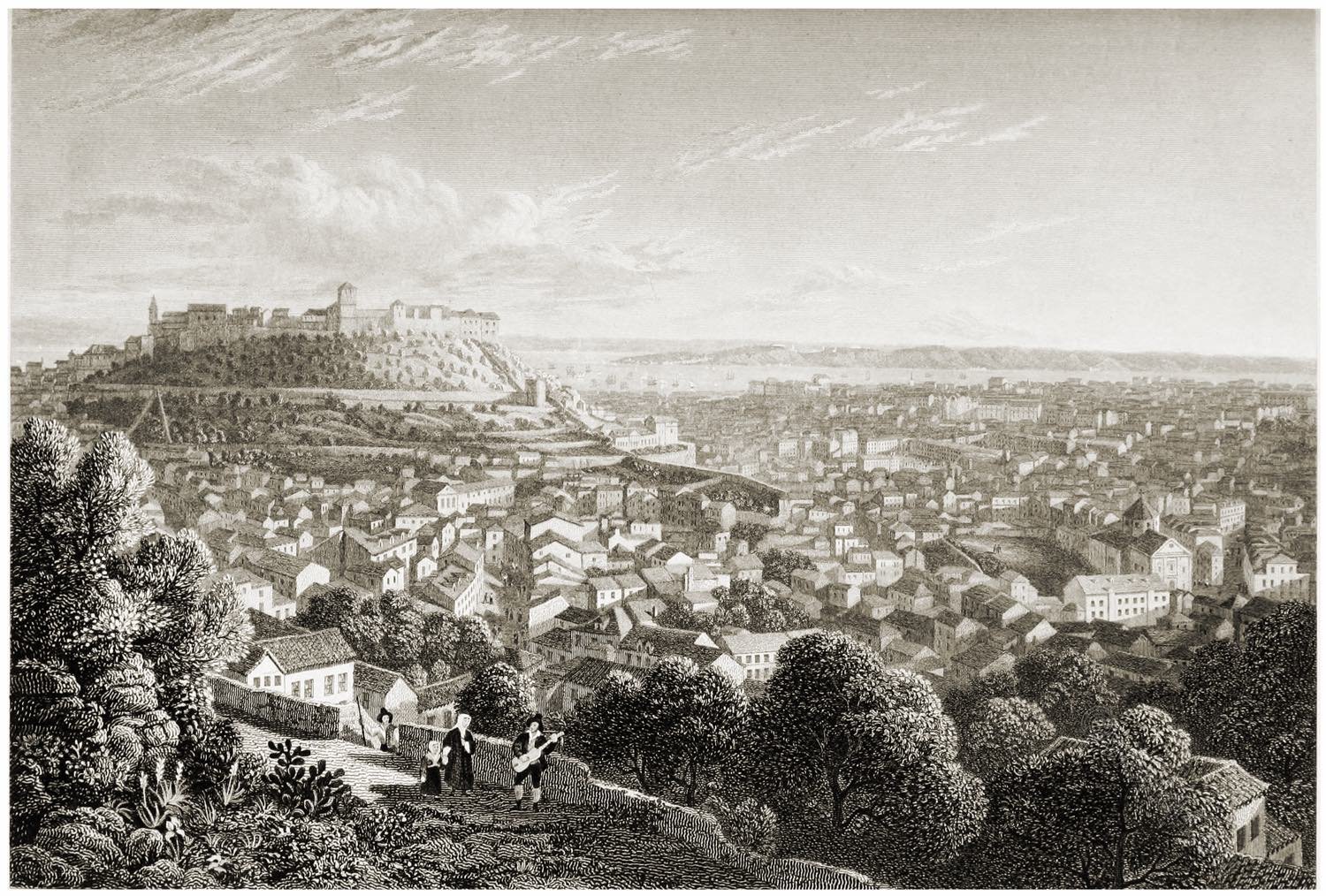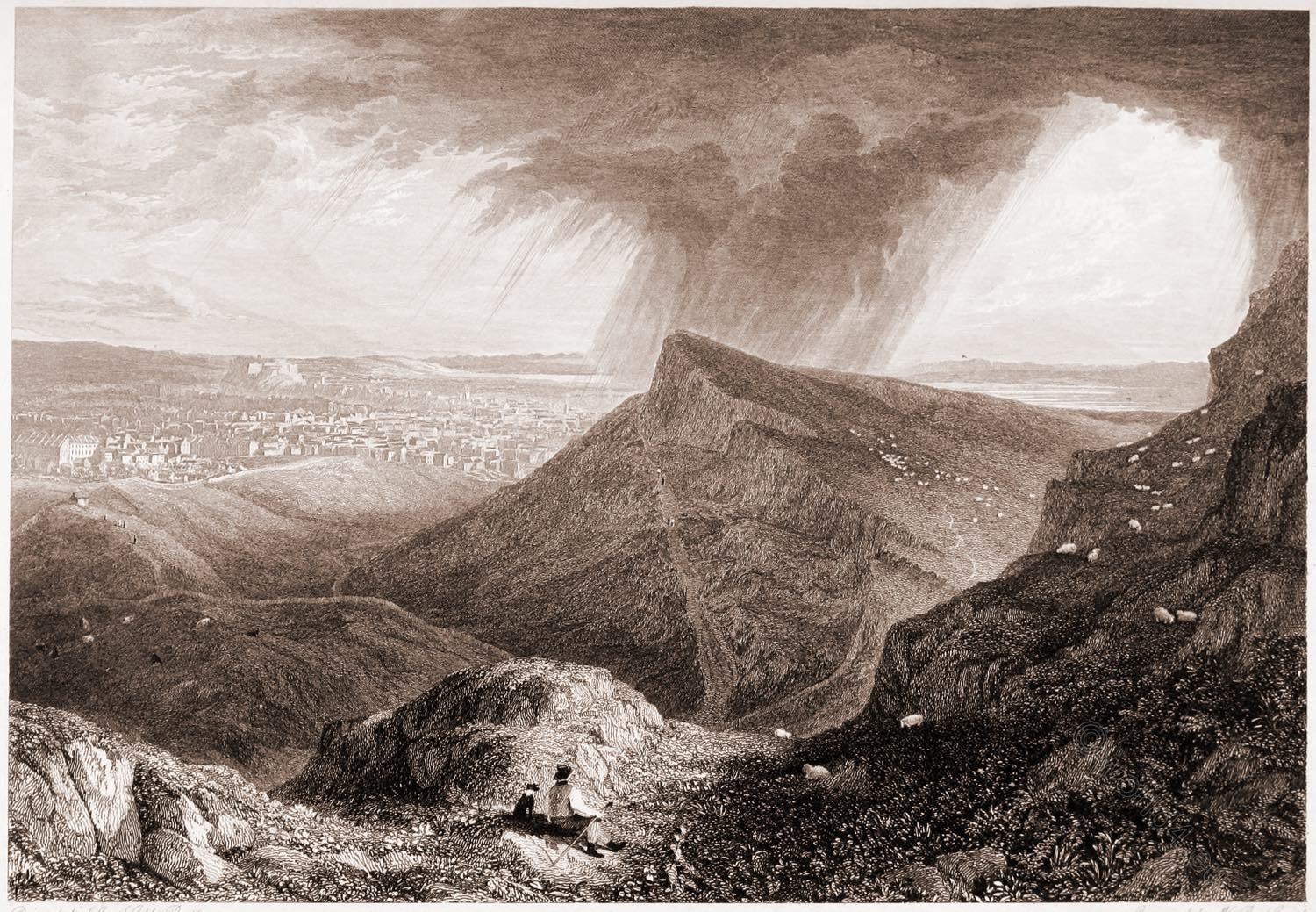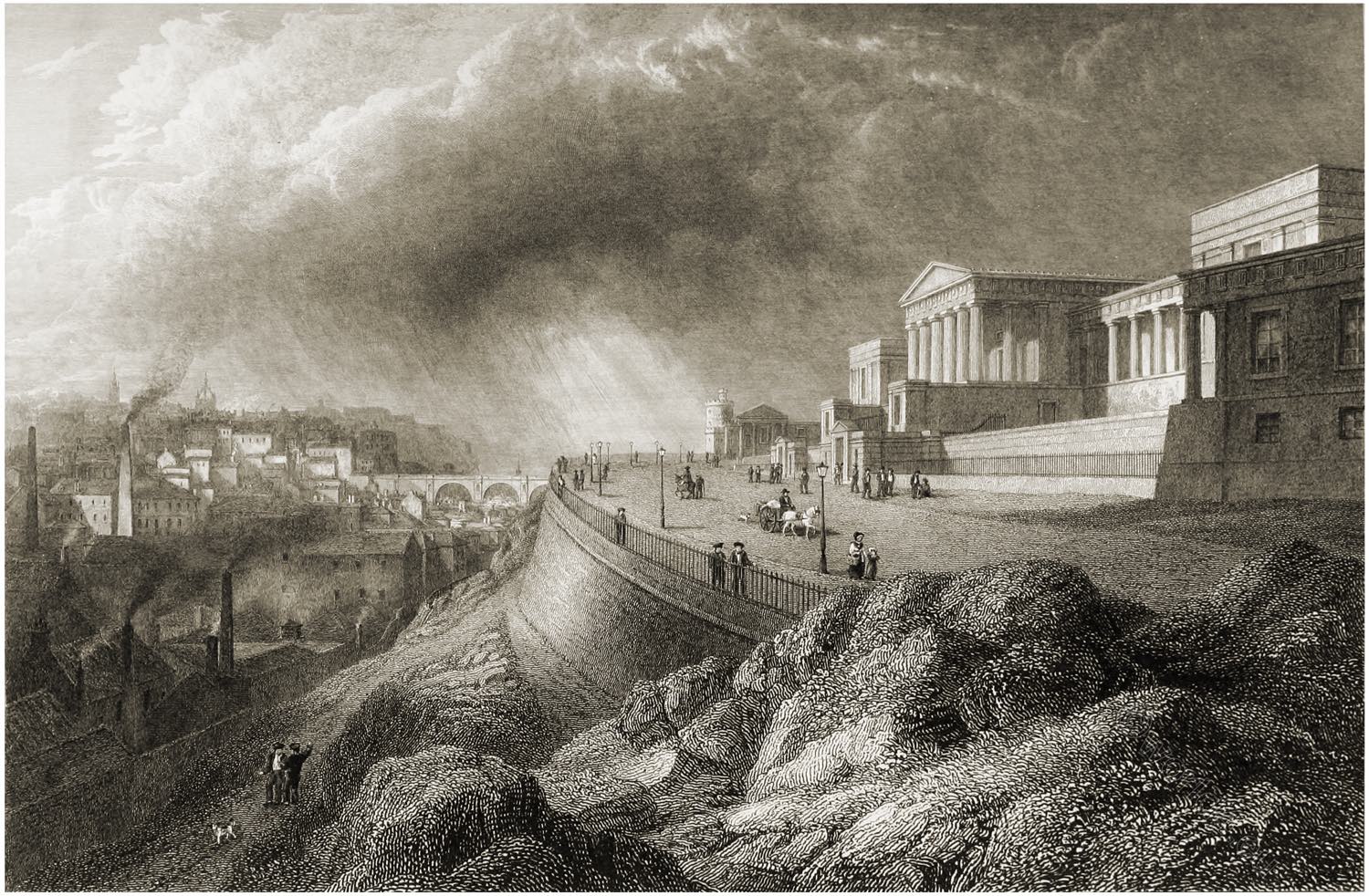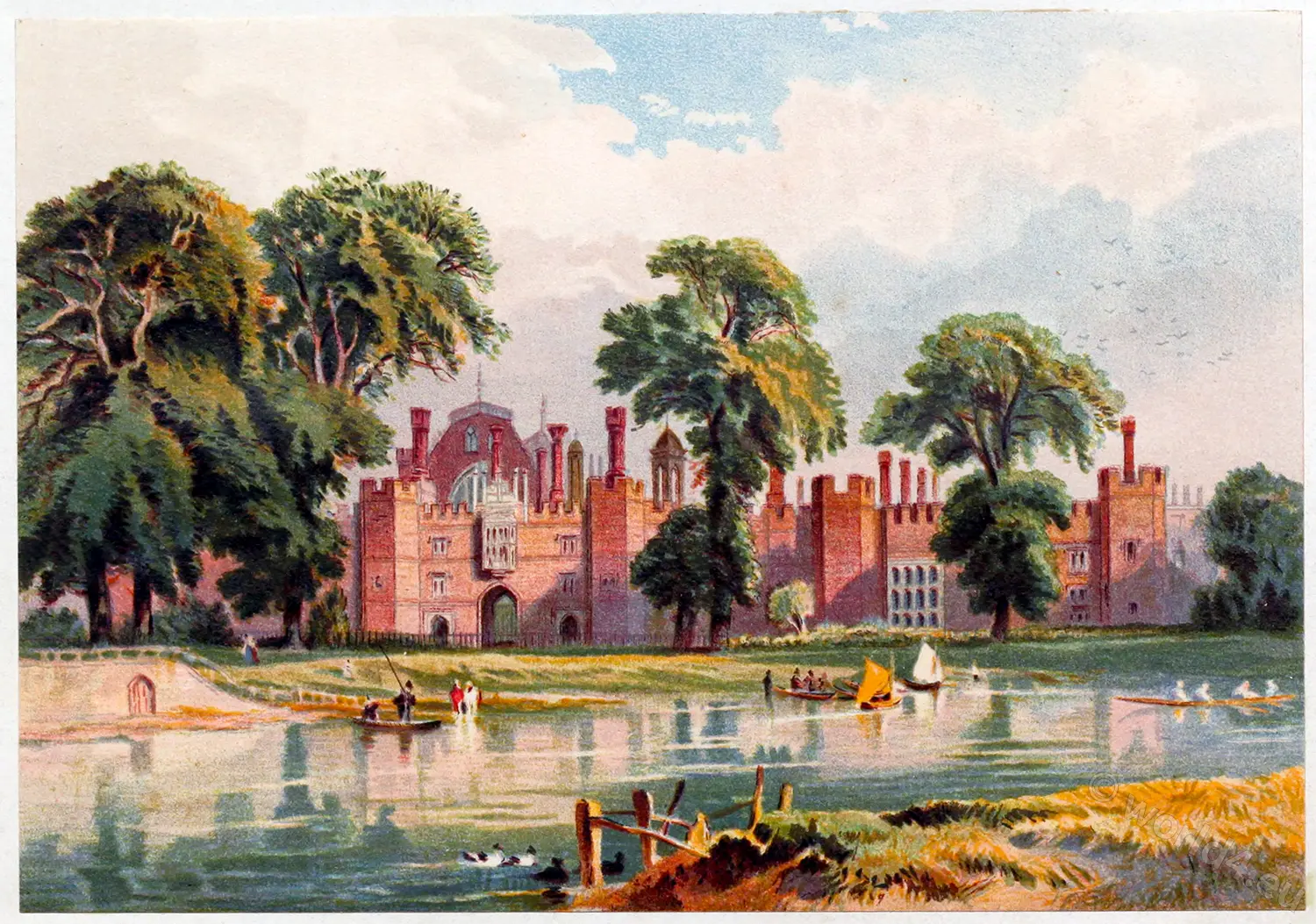HOLYROOD HOUSE, EDINBURGH.
The royal Palace bearing the above name was originally an abbey, founded by David I., A. D. 1128. The building is large, and forms a quadrangle, containing a number of spacious apartments, and being still considered a regal mansion. The rooms intended for the king’s use are, though nearly devoid of furniture, kept as rooms of state. The Duke of Hamilton, as keeper of Holyrood House, has some of the best apartments, and others are tenanted by several of the nobility, for their winter residences. Some of the rooms contain excellent paintings, chiefly portraits; a list of the most remarkable of which may be found in Pennant.
A considerable part of this Palace was destroyed during the usurpation of Oliver Cromwell; but the towers on the north-west side, erected by James V., were spared. In this part of the building are shown the apartments where the murder of David Rizzio was committed. The other towers, and the rest of this elegant and extensive pile, were built by order of Charles II.; Sir William Bruce, the Inigo Jones of Scotland, being the architect.
Within the Palace is a beautiful square, surrounded by piazzas. In the gallery are the portraits of all the kings of Scotland; and Mr. Newte, in his Tour, observes that many of them are well painted; but that in the last rebellion some soldiers, who were quartered in the Palace, mischievously tore the canvass of most of them with their bayonets.
The chapel adjoining to the Palace is a fine specimen of Gothic architecture; but, to the great disgrace of those entrusted with its preservation, has been suffered to fall entirely into decay. Beneath the ruins lie the bodies of James II. and James VI., Kings of Scotland, and several other persons of rank; among whom is to be reckoned Henry Darnley, whose bones are exhibited to travellers, being known by their magnitude, historians having related him to be seven feet in height.
Source:
- Antiquities of Great-Britain: illustrated in views of monasteries, castles, and churches, now existing by Thomas Hearne (1744-1817); William Byrne (1743-1805); James Phillips (Bookseller). London: Printed by James Phillips in George-Yard, Lombard-Street, and published by the proprietors T. Hearne and W. Byrne, 1786.
- Photographs of Scottish scenery by James Valentine (1815-1880). Dundee: J. Valentine, 1870.
Discover more from World4 Costume Culture History
Subscribe to get the latest posts sent to your email.




